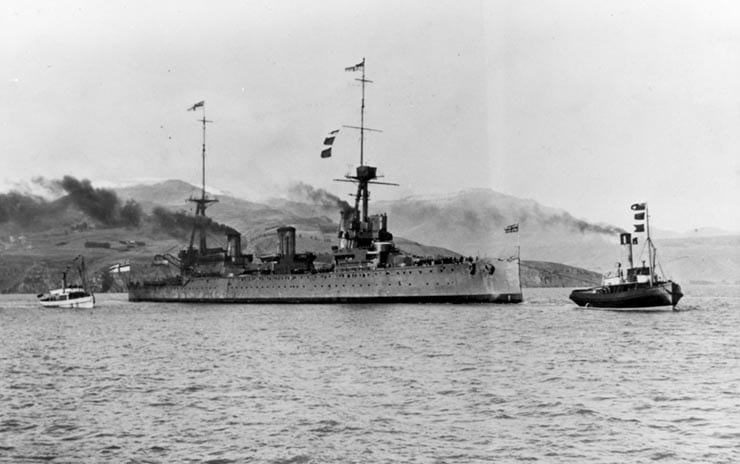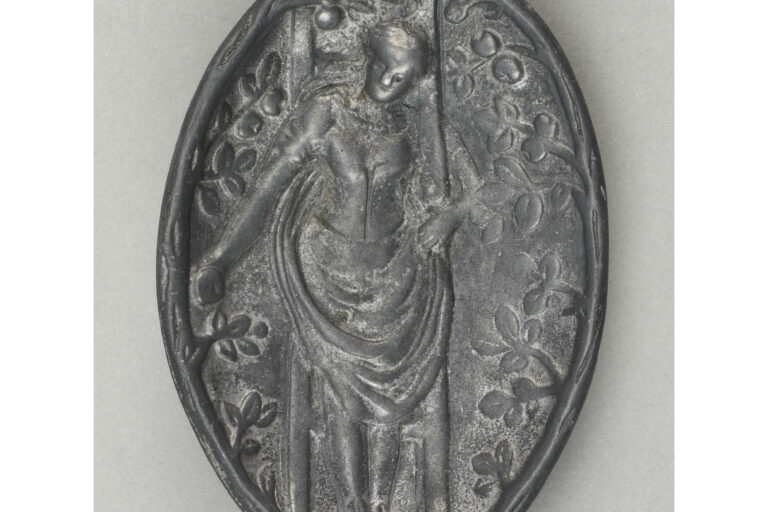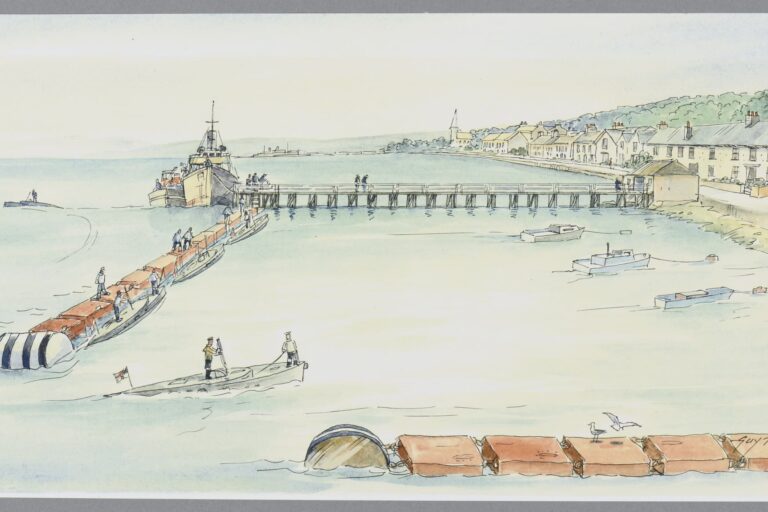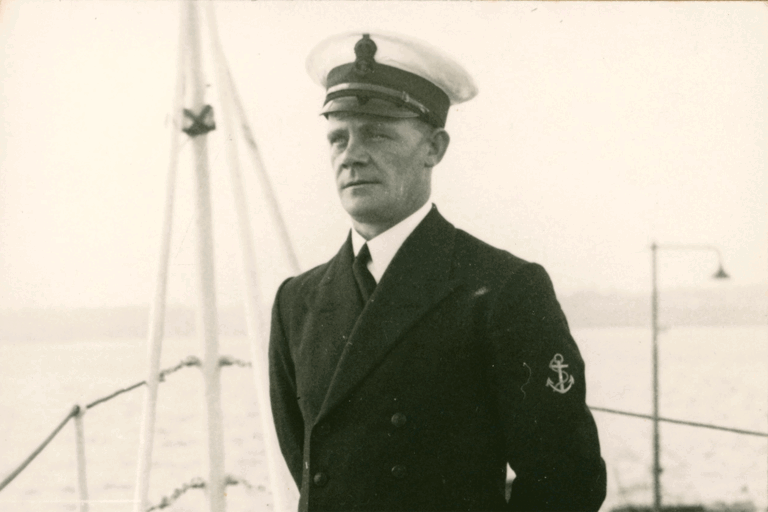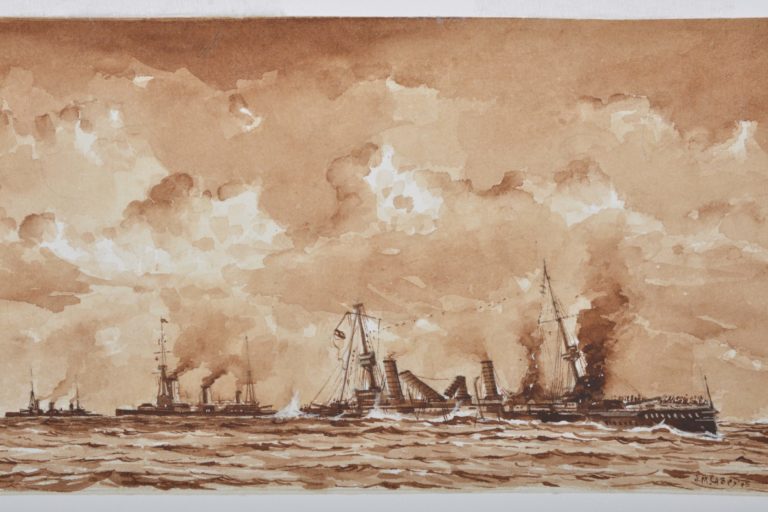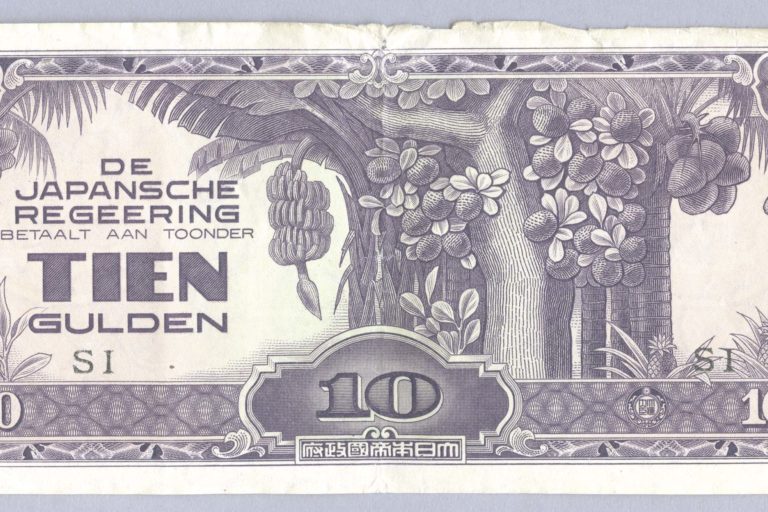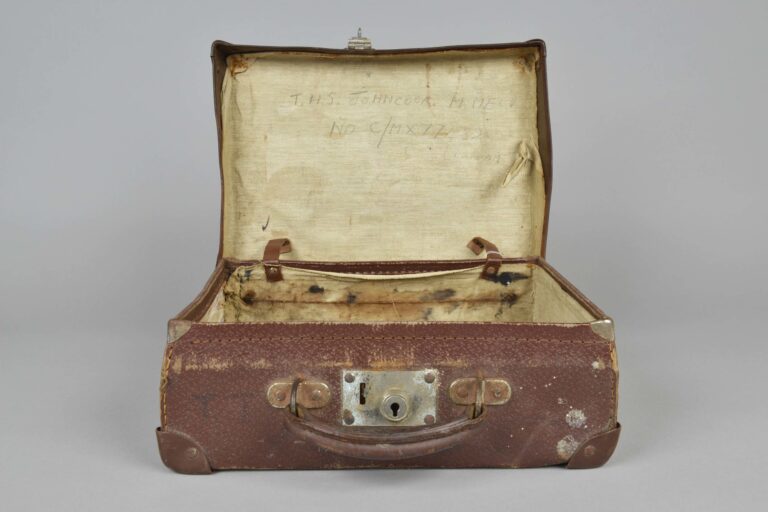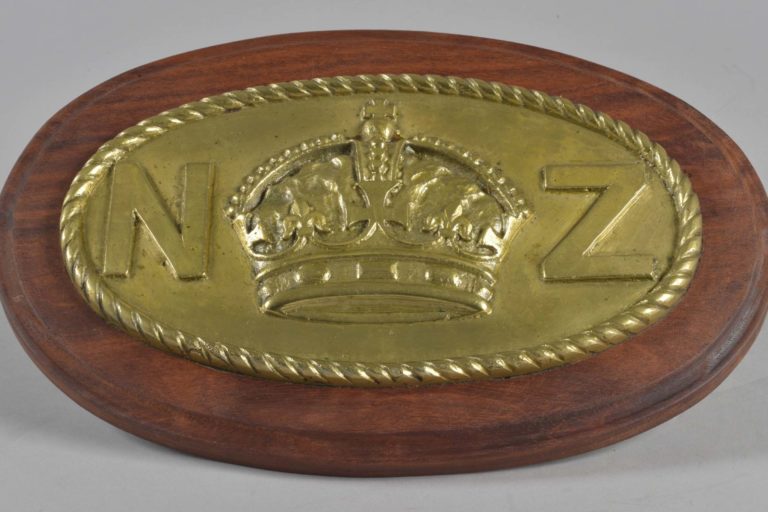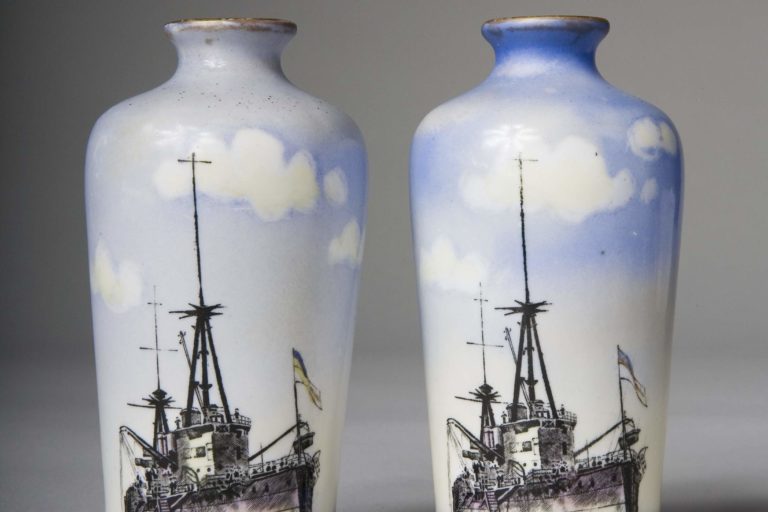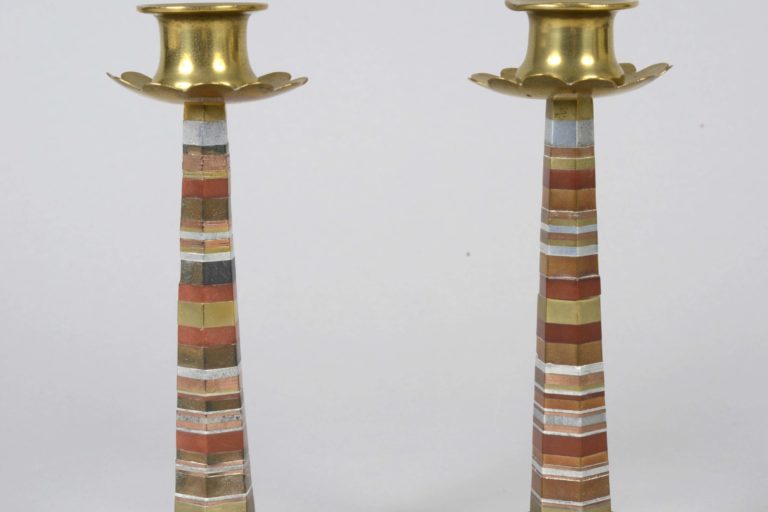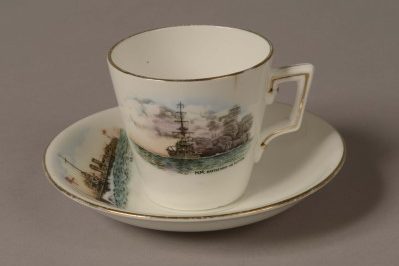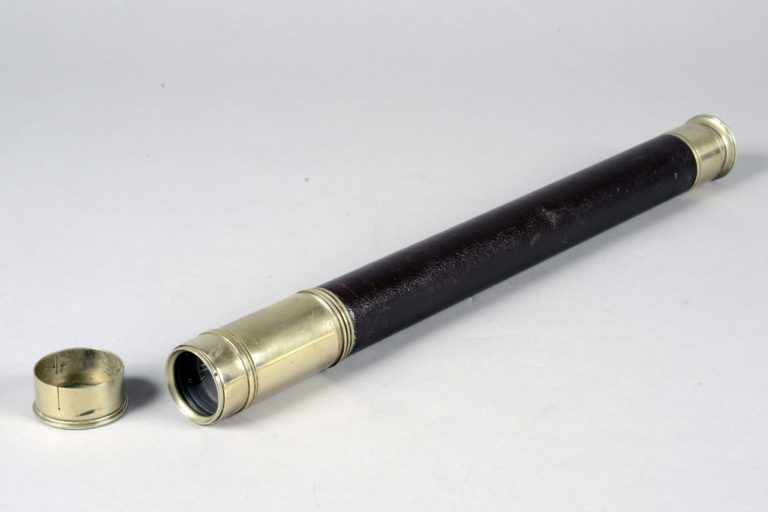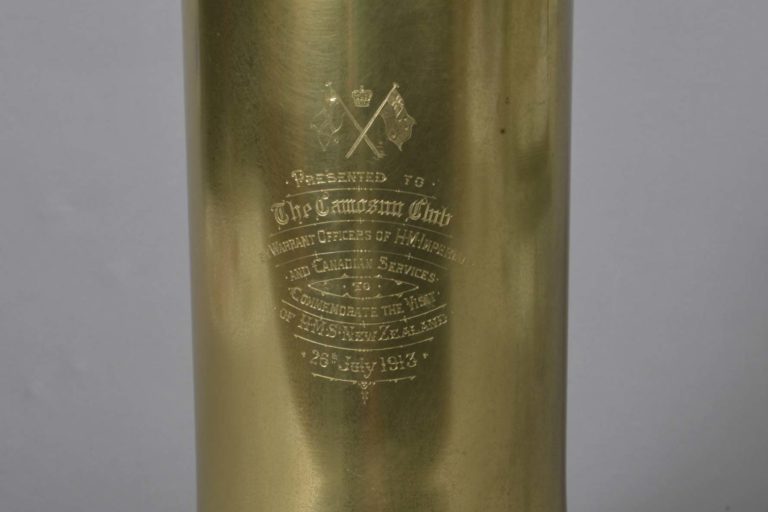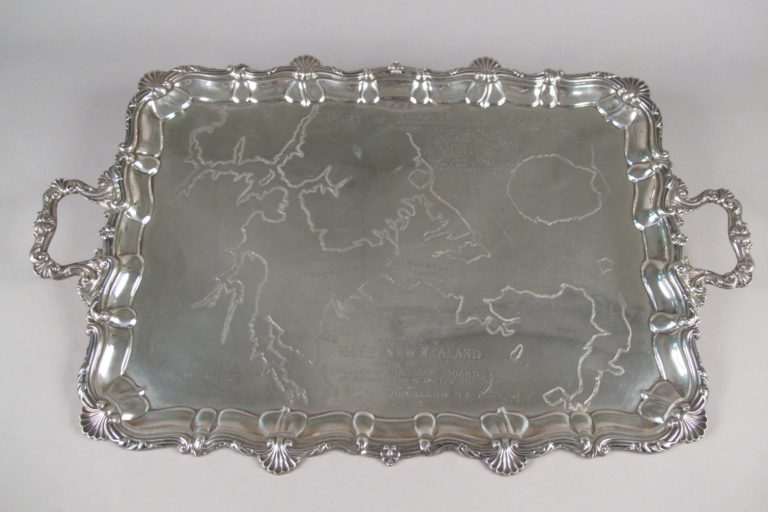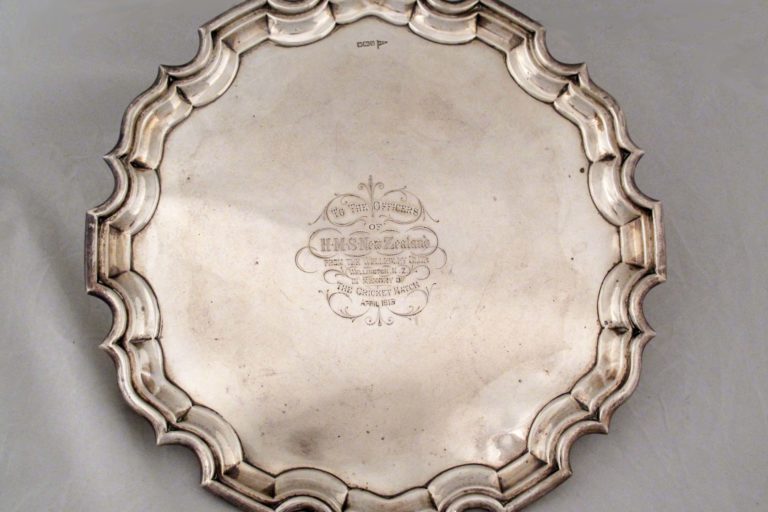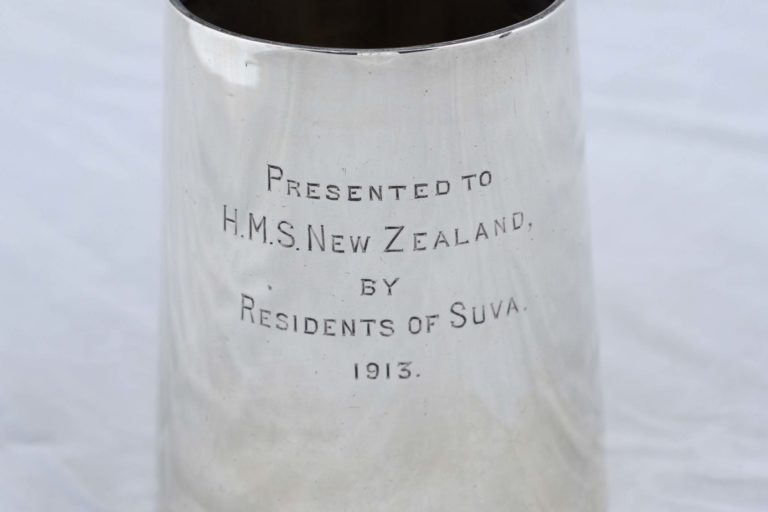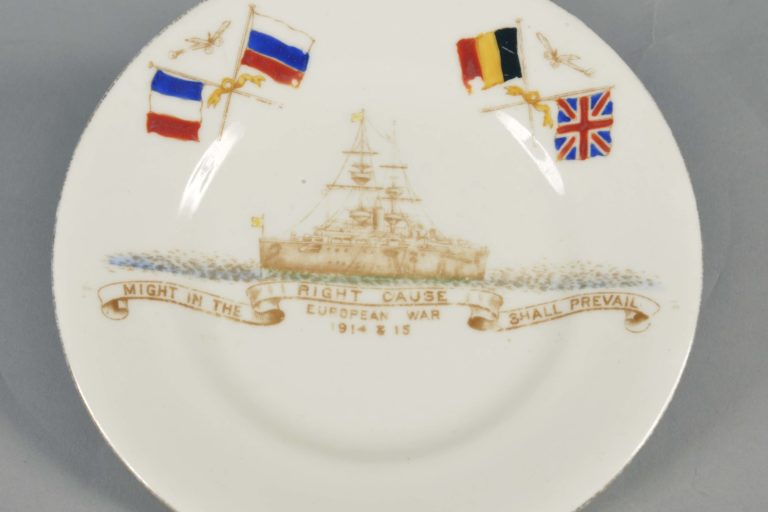A continuous watch must be kept in a warship at sea or in harbour to ensure the safety of the ship and its company and to keep her in working trim to meet any contingency encountered. Therefore a portion of the officers and ratings of the ship’s company must always be “on watch”. The number on watch depended on the size of the warship and whether if was in harbour or at sea. What follows below refers to a warship in peacetime operation. Men would be on watch and off watch. A watch is the time a rating works in his particular part of the warship. For example, Signallers would be at their posts on the signal deck and on the bridge to send signals by flag or by signal lamp. Stokers would be in the engine room stoking the boilers and shovelling coal. Off watch they got sleep, fed themselves in their messes, and relaxed. Some of those aboard would work a standard ten hour day such as stores accountant or writer branches and were known as dayworkers. It was the dream of every sailor to get a cushy watch.[1]
Officers also were part of the watchkeeping system. For example, officers would always have to keep watch on the bridge and maintain the ship’s log. The commanding officer set his own schedule but was always on call. The senior officer on watch was known as the Officer of the Watch [OOW]. He was in the bridge for the duration of his watch and was responsible for the warship.
Timing of Watches – because of the need to be operating 24 hours the watch system was divided as follows:
0000-0400 Middle Watch
0400-0800 Morning Watch
0800-1200 Forenoon Watch
1200-1600 Afternoon Watch
1600-1800 First ‘Dog’ Watch
1800-2000 Last ‘Dog’ Watch
2000-0000 First Watch
The purpose of having the two two-hour ‘Dog’ watches was to divide the 24-hour day into an uneven number of watches so that watchkeepers do not keep the same watches every day. Men would start at First Watch then move forward through the 24 hours
From the Royal Navy’s 1915 revised Manual of Seamanship Volume I, published 1917.
- A warship is divided into two watches Starboard and Port
- Port and Starboard watch is divided into two parts Part 1 & Part 2
- These parts are then divided into two sub-divisions.
- Each watch is then divided into four parts of the ship:
- Forecastlemen
- Foretopmen
- Maintopmen
- Quarterdeckmen[2]
While at sea one part of the watch is always on deck night at day. The part of a watch is the smallest number of officers and ratings used to work the ship.[3] If the warship was in harbour, both watches would be on deck during working hours [0800 – 1600] after which the watch on board is used for any work that may be necessary. The key document for watchkeeping was the Watchbill. This was a nominal list of all officers and ratings aboard the warship giving the watches and stations to which the man is assigned. This includes what watch he is assigned to, what part of ship he stands his watch, what his station is for leaving and entering harbour and in the case of an emergency his station for abandoning ship.[4]
The following duties are to be carried out by the watch on deck when the warship is at sea and were called ‘tricks’. It was the responsibility of the rating to advise his relief of the key information relevant to the task at hand.
Lookouts –
Daytime: one rating is stationed at the masthead or at the top to keep a lookout and report to the Officer of the Watch. Each lookout kept watch for an hour until relieved by the next rating. It was the responsibility of the lookout to advise the OOW of anything unusual, hazards to the ship, land or vessels encountered.
Nightime- lookouts were stationed on the bridge and would carry out the same duty as the daytime lookouts. They would make sure that the bow lights and steaming lights were working properly so the ship could be seen at sea. They reported to the OOW who was also on the bridge and were relieved hourly. Every time the bell was stuck they would call out “Port lookout” or “Starboard Lookout” dependent on if they were part of the Port or Starboard watch. In the case of fog or bad weather additional lookouts would be posted.
Other key watch positions were:
Helmsman – this was a rating that steered the warship under the supervision of the Quartermaster, a senior rating who post was on the bridge. The rating was relieved every two hours.
Flag and Conemen – if the warship was steaming in company with other ships one rating were stationed on the port and starboard sides of the bridge to work the revolution flags and speed cone.[5] At nightime the flags and cones were replaced by speed lights and the men would be relieved every hour. If the warship was entering or leaving harbour or manoeuvring, two men would be stationed each side.
Telegraphmen – these men were stationed in the engineroom and monitored the engineroom telegraphs and would work them as ordered by the OOW using the bridge telegraph. They in turn would report to the bridge that the order was carried out for example “all ahead full”, “starboard engine going astern”.
Messenger – a rating would be stationed at the bridge to run messages to anywhere in the ship when necessary. This was for all watches.
Leadsmen – two ratings would be placed near the port and starboard chains [a platform either side of the forecastle which can be extended out from the warship’s side to provide a clear run for heaving lead] when the warship was near or approaching land. Men were relieved every hour or more frequently if the weather was bad.
Sentry on Lifebuoy – when a ship is underway a rating is placed to stand sentry on the ship’s lifebuoys. They would let the buoy go if a man went overboard and advise the bridge. This was stood during daylight hours.
Seaman Gunner of the Watch – The seaman gunner of the watch places a rocket ready for firing at sunset. Looks after the signal guns and makes sure they are cleared away and the ammunition placed in a position ordered for it in rear of the gun mount. He would report to the Bridge that this was done at sunset.
Carpenter of the Watch – A rating from the carpenter branch had the duty to go round the warship every two hours to see that no water is being taken on. He reported to the OOW.
LTO of the Watch – One or more torpedo ratings would be told off [i.e. ordered] as LTO of the Watch. Their task was to repair any small defects in electrical gear which may occur during their watch and look after electric motors which are running. The ratings who served in the Torpedo Branch had electrical qualifications.
Sea-boat’s Crew – This consisted of a cutter’s crew taken from the watch on deck who were seamen branch ratings. The crew were always to be standing watch on the upper deck and be ready to man either sea-boat instantly. They would fall in separately when the watch or both watches fall in. A second sea boat crew would be told off from the watch so that the other sea boat may be quickly manned if required. The crew was lead by the Coxswain, a senior rating who commanded the boat when deployed.
Sea-boat Lowerers – A Leading Seaman rating of the Fore and Maintop Watch and two junior ratings of each of these parts of the ship are sea-boat Lowerers. They would muster with the sea boat’s crew.
Sounding Party – Two junior ratings and a Leading Rating are told off in each watch as a sounding party to work the sounding machine. They would be piped [i.e. called to their task] to do so as required. When the sounding machine was kept running constantly the party would be relieved as necessary.
[1] John Hard, Royal Navy Language, Lewes: The Book Guild, 1991, pp. 125-126.
[2] These classifications go right back to the days of sail.
[3] John Hard, Royal Navy Language, Lewes: The Book Guild, 1991, pp. 125-126.
[4] ibid.
[5] The revolution flag reported who fast the propellers were turning and the speed cone advised how fast in knots the warship was moving through the water. The greater the revolutions the faster the ship would move through the water.

